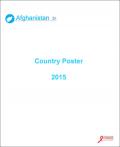What's New
Displaying results 2221 - 2230 of 4052
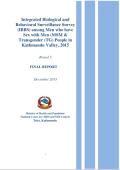
Resource | Publications,
As of 2015, five rounds of IBBS surveys have been conducted in Nepal. The main objectives of the IBBS survey were to: determine the prevalence and trend of HIV Syphilis, Chlamydia Trachomati (CT) and Neisseria Gonorrhoea (NG) and associated risk behaviors among MSM/ Transgender (TG), collect information related to socio-demographic characteristics and explore the association between the risk behaviors and HIV and other specific STIs among the MSM/TG population.

Resource | Publications,
This is the sixth round of the IBBS study conducted among PWIDs in Eastern Terai Highway Districts. This survey is a part of the National HIV Surveillance Plan (2012) and National HIV and AIDS Strategy (2011-2016). In line with the objectives of the previous rounds of the IBBS, the sixth round of the survey was also undertaken primarily to determine the prevalence of HIV and STIs, assess HIV and STI related risk behaviours, drug injecting behaviours, the level of awareness about HIV/STIs, as well as their exposure to intervention programs among PWIDs in Eastern Terai Highway Districts. Moreover, this survey examined the prevalence of Hepatitis B and Hepatitis C among PWIDs for the first time.

Resource | Publications,
The sixth round of the IBBS survey in Kathmandu valley among 340 males among People Who Inject Drugs (PWID) was conducted by NCASC with financial support from the TI Pooled Fund. The survey has primarily collected strategic information needed to analyze trends in risk behavior associated with HIV and STI. For the first time in the history of IBBS, the survey has introduced HCV and HBV testing to determine prevalence among PWIDs.
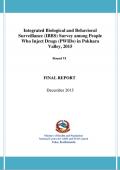
Resource | Publications,
The sixth round of IBBS surveys carried out in the Pokhara Valley was conducted among 345 males among people who inject drugs (PWIDs) with financial support from the Global Fund. This survey focuses primarily on collected strategic information needed to analyze trends in risk behaviors associated with HIV/STI infection among the male subpopulation of PWIDs. This survey has introduced HCV and HBV testing to determine their prevalence among PWIDs for the first time in IBBS study.

Resource | Publications,
This is the fifth round of the IBBS survey conducted among 500 Female Sex Workers (FSWs); 300 establishment-based and 200 street-based in 2015. The survey covered the entire Kathmandu Valley: Kathmandu, Bhaktapur, and Lalitpur districts. The fieldwork for the survey was carried out from June 10 to June 25, 2015. The survey was undertaken primarily to track the trend of HIV infection and syphilis in FSWs and to understand risky sexual behaviors among FSWs in the Kathmandu Valley.
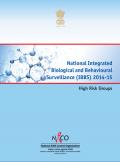
Resource | Publications,
National IBBS, first nationwide community based bio-behavioural surveillance among HRG and bridge population, collected information on many key parameters of programmatic importance. It included Knowledge indicators related to HIV prevention, STI, Condom, HIV/AIDS services, risk profile and practices, HIV testing, stigma and discrimination as well as exposure to HIV/AIDS services and community mobilization. Tools were translated into 16 languages, and data collection was done using computer-aided interviewing technique. Fieldwork was monitored by eight reputed government public health institutes. Blood specimens collected during National IBBS were tested for HIV at 17 states- of-the-art DBS laboratories. This report aims to provide a descriptive analysis on a comprehensive set of indicators for core groups FSW, MSM, and IDU. The report provides state wise behavioural estimates while HIV prevalence estimates have been provided for a state or a group of states.
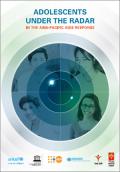
Resource | Publications,
The Asia-Pacific region is facing a 'hidden epidemic' of HIV among adolescents. There were an estimated 50,000 new HIV infections among adolescents aged 15-19 in 2014, accounting for 15 per cent of new infections. There are now around 220,000 adolescents living with HIV in the region, with large cities like Bangkok, Hanoi and Jakarta hubs of new infections.
Although new HIV infections are falling overall, they are rising among adolescents from key populations, in particular young gay men and other men who have sex with men. The rise in new infections coincides with an increase in risky behaviour, such as multiple sexual partners and inconsistent condom use.
These findings come in a new report, 'Adolescents: Under the Radar in the Asia-Pacific AIDS Response', published today by the Asia-Pacific Inter-Agency Task Team on Young Key Populations, which includes UNICEF, UNAIDS and others.
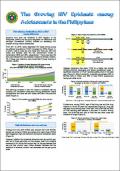
Resource | Fact Sheets,
Evidence from both the HIV/AIDS & ART Registry of the Philippines (HARP) and the 2015 Integrated HIV Behavioral and Serologic Surveillance (IHBSS) indicate an escalating HIV problem among Filipino adolescents.
From 2011 to 2015, newly diagnosed HIV cases among young key affected populations (YKAP) increased by 230%; of which, male to male sex and males who have sex with both males and females were the two predominant modes of transmission (58% and 26%, respectively). There were also 9% who were infected from sex between males and females. Notably, 7% of these new infections were transmitted through sharing of infected needles.
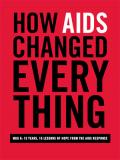
Resource | Publications,
How AIDS changed everything—MDG 6: 15 years, 15 lesson of hope from the AIDS response celebrates the milestone achievement of 15 million people on antiretroviral treatment—an accomplishment deemed impossible when the MDGs were established 15 years ago. It also looks at the incredible impact the AIDS response has had on people’s lives and livelihoods, on families, communities and economies, as well as the remarkable influence the AIDS response has had on many of the other MDGs. The report includes specific lessons to take forward into the SDGs, as well as the urgent need to front-load investments and streamline programmes for a five-year sprint to set the world on an irreversible path to end the AIDS epidemic by 2030.






